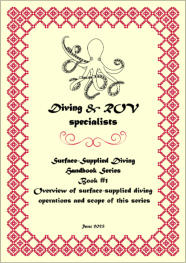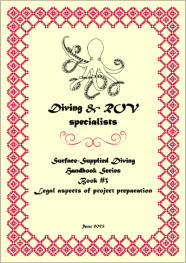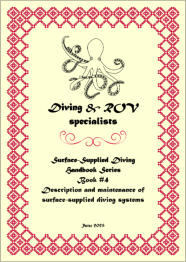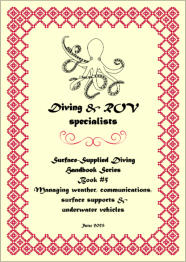Company manuals are part of the company's management system
and are mandatory. However, writing and updating such documents
requires significant time, financial resources, and expertise:
- It is essential to involve individuals who are accustomed to
conducting such work to ensure that the published documents
are fully compliant with national and international standards and
based on relevant scientific and technical publications.
- The cost of creating manuals is not fully controllable because
their design is based on knowledge and reference documents
that are sometimes not easy to find, organize, and explain. For
these reasons, extra time is often required to write these
documents, which must be easy to read and comply with both
national and international regulations. This research and
compilation time is usually very difficult to evaluate.
- A system of updating must be in place, as the competent bodies
regularly review their policies.
Multinational corporations can implement the creation of dedicated
safety and technical documentation without a significant impact on
their resources, as their turnover is high enough to make this expense
a relatively small part of their operating budget.
In contrast, small organizations may find that creating such
documents incurs a significant cost relative to their income.
Additionally, employees assigned to this work are typically not
specialized in it and cannot be utilized for projects where they have
more skills. Consequently, there is a risk that, due to a lack of expertise,
time, and resources, the documents produced may not address all the
risks to which these companies’ personnel are exposed and may not
fully comply with the regulations of the countries in which the
company operates. This can lead to loopholes being exploited by
unscrupulous individuals in the event of an accident, or the
documents being rejected by the competent bodies responsible for
evaluating them and subsequently by the customers themselves.
To help small companies solve this problem at a reduced cost, CCO
Ltd. has compiled a series of diving manuals based on recognized
appropriate national and international standards and guidelines, as
well as relevant scientific and technical documents. As a result, these
manuals comply with most national and international regulations and
can be utilized in part or in whole to:
- Create company manuals from scratch.
- Reinforce existing documents.
In addition to the reasons outlined above, the purpose of providing
these documents is to offer accurate references to people engaged in
diving operations, who may include, but are not limited to:
- Company managers
- Project managers
- Offshore construction managers
- Diving & ROV superintendents
- Diving & ROV supervisors
- Divers & ROV pilots
- Client representatives
- Every person interested in diving and ROV procedures
Of course, the responsibility for their use by companies lies entirely
with those who choose to adopt them. These documents are
available free of charge from the Diving and ROV Specialists website
and by clicking on the images of the descriptions below:



CCO Ltd
52/2 moo 2 tambon Tarpo 65000 Phitsanulock - THAILAND
Email: info@ccoltd.co.th Phone: +66 857 277 123
However, while the free documents mentioned above can serve as
references, they remain generic copyrighted manuals based on diving
and ROV systems that are similar but not identical to those utilized by
the companies that adopt them. For this reason, we recommend
developing specific manuals tailored to the actual needs of
companies. Although this may result in higher costs, we have the
expertise to deliver this at competitive prices. Tailored manuals offer
the following advantages:
- They are written in accordance with the diving systems utilized by
the company, allowing personnel to use them effectively and
preventing the mistakes that often arise when individuals face
equipment that is poorly documented and unfamiliar to them.
- The working practices outlined in the manuals are specific to the
company and are evaluated by the manual authors for
compliance with relevant standards, appropriate industry
guidelines, and referenced scientific and engineering
publications.
- We can assist in obtaining approval for these manuals from
national bodies if necessary.
Saturation diving handbook
This Manual, which comprises four documents and an appendix, is a compilation of
elements from three publications, which have been considered suitable for their purpose
by recognized diving specialists in addition to diving contractors and their clients.
- The saturation diving manual CCO Ltd, which was 1st published in 2014.
- The diving study #5 CCO Ltd “Implement Normam-15/PDC saturation diving
procedures.
- The document Diving & ROV specialists “Description of a saturation system”.
It has been written to provide elements that can be introduced in company manuals and
give information regarding the organization of saturation diving to people who are not
lucky enough to work on such systems or people who have been involved in such
operations during a period of their life but need to refresh their memory. For this reason, it
is designed to be accessible to people with limited diving knowledge.
This manual has been updated to the latest standards in August 2021.
To download the documents, click on the photos of their covers.
Book #1 - Definition and elements for preparation.
This book describes the scope of saturation procedures, the
reason for NORMAM 15 PLC saturation procedures, and some
elements to consider when organizing a saturation diving project,
such as: the team size and responsibilities, the maintenance of the
diving system and other equipment, the various surface supports,
the use of underwater vehicles, the means of communication to
be in place, and the mandatory on-site documentation.
Book #2 - Gas supplies and chamber management
This document outlines recommended practices and emergency
procedures for managing chambers and their supplies, ensuring
safe and successful operations. It highlights topics such as the
various designs of saturation systems, the elements controlled by
the Life Support Technicians, gas management, chamber
management, and their emergency procedures.
Book #3 - Bell procedures
This book outlines recommended practices for organizing
safe bell diving operations. It provides a description of the bell
and the elements that control and monitor divers at work,
along with relevant emergency procedures.
Book #4 - Diving accidents
This document classifies and explains the accidents associated
with saturation diving procedures, as well as how to prevent and
mitigate these accidents. Elements of physiology are provided to
help the comprehension of the phenomena described, as well as
references to relevant scientific papers. Additionally, two sets of
medical tables (US Navy and Comex) are provided, along with
medical checklists and records.
Appendix
This book provides heliox surface-oriented tables that can be used
to recover divers faster than with the saturation procedure if the
first compression must be interrupted for technical or other
reasons.
The reason for providing them in the appendix is that they take up
too much space to be included in Book #2.





Basic rigging and lifting procedures handbook

These documents have been written with the consideration that
technical documents must be pleasant to read. Therefore, efforts have
been made to write texts that are accessible to people not familiar
with commercial underwater operations:
- New terms are explained in the text, rather than in a glossary at
the beginning of the document.
- Acronyms are used sparingly and are explained in the context in
which they appear.
- The guidelines from competent bodies are explained but never
modified. Additionally, many official guidelines are included in the
manuals to avoid the need to search for them in another
document.
- Drawings, charts, and photos are provided to reinforce each topic
discussed.

Photo by Fabrice Pipault
Surface-supplied handbook series
This handbook series comprises eight separate documents, each detailing a specific aspect of
surface-supplied diving operations organization. It has been written with the same aim as the
saturation diving manual and can therefore be used in full or in part, provided that those
using elements from these documents in their own work cite them as sources.
Note that two sets of decompression tables, renowned for their reliability, are included along
with the relevant documents demonstrating that two these decompression procedures are
suitable for underwater work.
Book #1 - Overview of surface-supplied diving operations and
scope of this series
This document explains the diving methods discussed in this
handbook series and their limitations. Additionally, it provides an
overview of the various topics covered in each book of the series.

Book #2 - Description and prevention of accidents associated to
diving operations
This document provides information on the medical aspects of
diving operations, including elements of anatomy and physiology,
the description and management of the various diving accidents,
and the use of the US Navy and COMEX medical tables.
References to scientific papers are provided to explain the
phenomena discussed more clearly.
Book #3 - Legal aspects of project preparation
This document provides information on the organizations that
publish rules and guidelines that influence diving operations, the
parts of the sea under the authority of States (IMO rules), the
organization of surface support diving teams, the responsibilities of
the personnel and their management, and the mandatory on-site
documentation and certifications.


Book #4 - Description and maintenance of surface supplied
diving systems
This book provides a comprehensive and detailed description of
the various components of surface-supplied diving systems,
including their maintenance and certification process. Numerous
schemes are provided to aid comprehension of the various
systems, as well as references to standardization bodies and
classification societies.

Book #5 - Managing weather, communications, surface supports
& underwater vehicles
This book provides information on the organization of
communications, the selection and implementation of surface
supports and underwater vehicles, as well as managing the
weather window to efficiently and safely implement surface-
supplied diving operations.
Book #6 - Prepare and manage the dives
This book provides information on gas management, the
elements to organize for the prelaunch phases of diving
operations, and relevant procedures for managing the dives,
including emergency procedures.
Note that it does not include elements for controlling the
decompression of divers, which are discussed in Books #7 and #8.



Book #7 - Implement the MT 92 tables
This document explains the structure of the MT-92 diving tables, as
well as the method for implementing the air standard and nitrox
procedures provided by these tables. Numerous schemes and
charts are provided to clarify the different phases and the
enhancements proposed, as well as scientific papers that justify
the use of this table set and the various procedures it offers.

Book #8 - Implement the DCIEM tables
This document discusses the same topics, using the same
methods as above for the DCIEM tables
This handbook aims to promote the essential principles for
organizing the lifting of various loads for diving and ROV
teams involved in multiple projects. It is based on national
and international standards, and provides descriptions of
various lifting systems, as well as the management
procedures associated with these systems. Numerous
schemes are provided that are compliant with those
offered by the standardization bodies, as well as charts
and methods for calculating the behaviour of most loads
usually transferred.
As suggested by its title, this document does not include
procedures for complex and exceptional load transfers.









